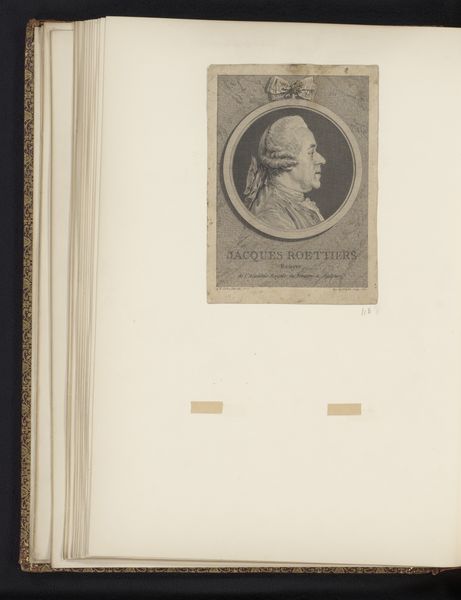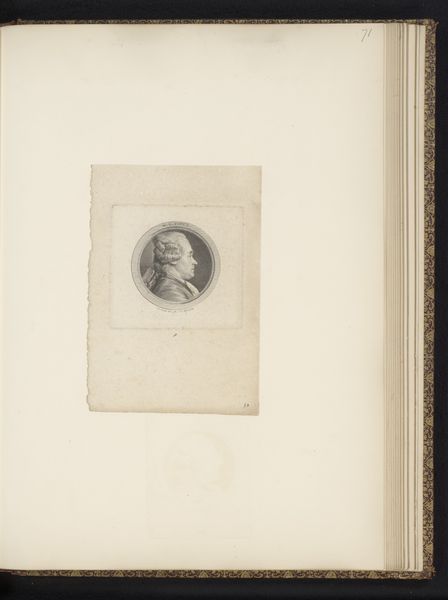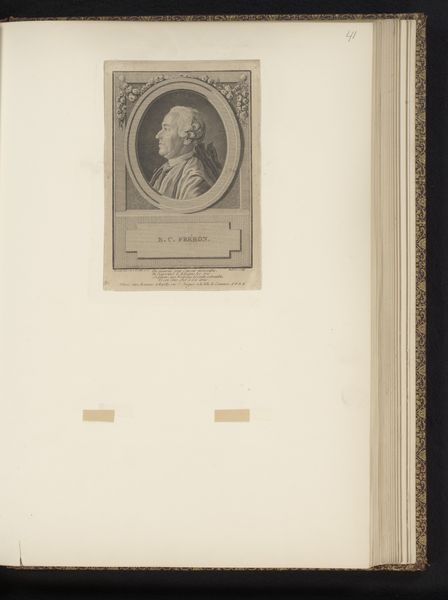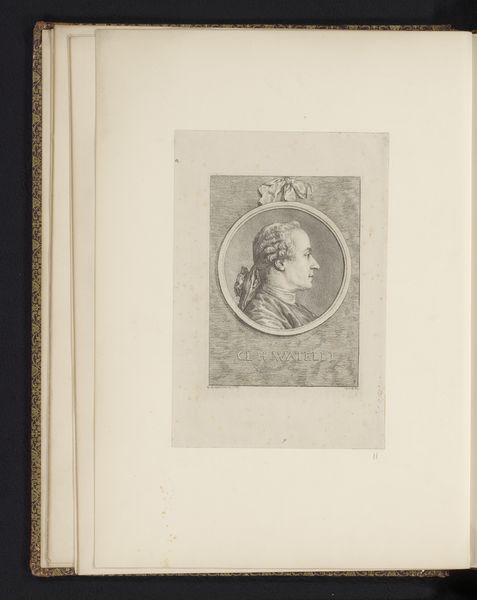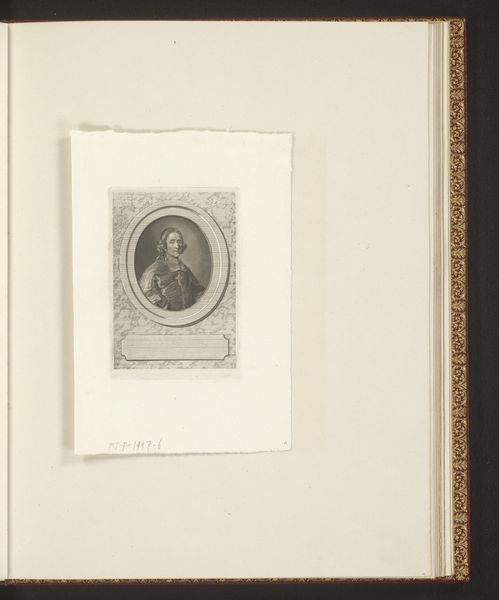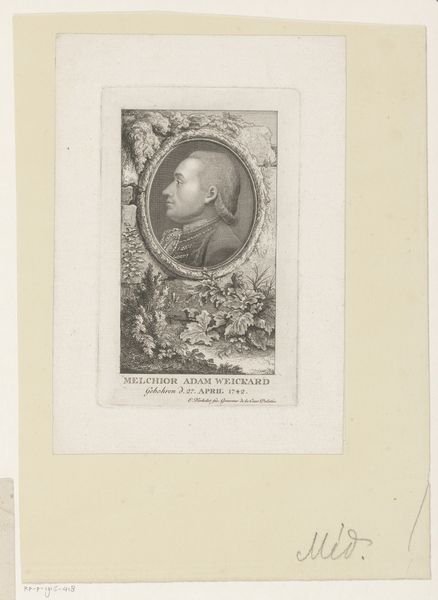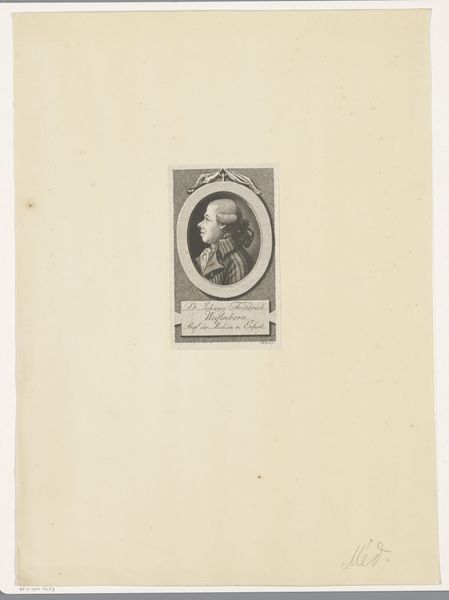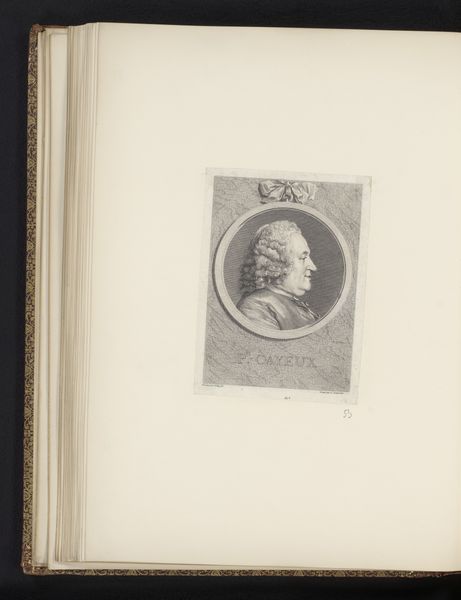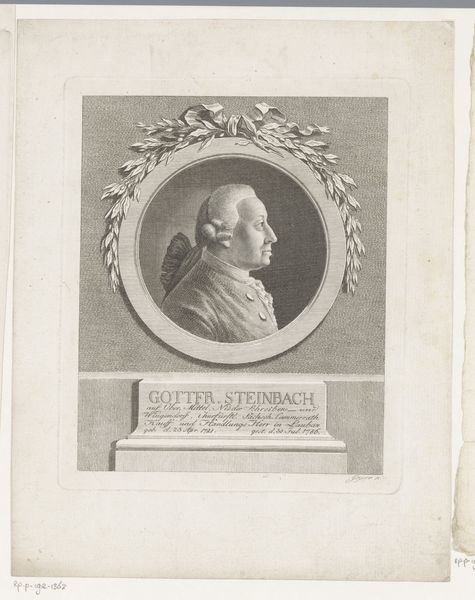
paper, engraving
#
portrait
#
neoclacissism
#
paper
#
historical fashion
#
history-painting
#
academic-art
#
engraving
Dimensions: height 140 mm, width 105 mm
Copyright: Rijks Museum: Open Domain
Curator: What strikes me first is the elegance. Look at this profile, etched in fine lines… The work is "Portret van Johannes Hoze," an engraving by Johann Heinrich Lips, likely done between 1768 and 1817. You can see it here at the Rijksmuseum. Editor: It has a certain stillness, a very mannered feel. It’s hard to ignore the paper it’s printed on – it appears quite aged and you can notice imperfections, telling its own silent history. What kind of paper and ink do you imagine they used back then? It’s quite an opaque texture that gives dimension. Curator: Lips was working during a period of transition, a swing towards Neoclassicism. And these images… these portraits in profile… they echoed the visual language of ancient coins, a kind of shorthand for virtue and reason. They were signifiers to create an ethos of simplicity through symbolism. Editor: Absolutely, and even that engraved border seems designed for mass production; it's clean, streamlined – perfect for reproducing multiple images on paper and sending them around the Dutch landscape of the period, an emblem of republican simplicity for broad consumption. Were there many other portraits similar to this at the time? It feels part of a wave. Curator: Definitely. This visual language was about circulating ideas, not just images. These symbols are visual representations of specific power structures: notice the frame with draping elements, that alludes to authority. Lips tapped into a shared cultural understanding of the elite during a pivotal era. Editor: So, it's a carefully manufactured image, consciously playing with ideals that reinforced elite control through crafted symbols. Thinking about Lips himself – I wonder how he saw his own role. He must have seen himself partly as a craftsman reproducing the images to participate in the construction of status. Curator: It's that tension, isn't it? Between the craftsman and the conveyor of ideology. Editor: Precisely. It encourages one to think of an image's own biography: the paper it is made of, the hands it passed through in the production process, as much as the symbolism. All those things shape the meanings of an image like this for the communities that make and view them. Curator: It really shows you that every artistic material, every method, carries its own context that creates new symbols every step of the way. Editor: Exactly.
Comments
No comments
Be the first to comment and join the conversation on the ultimate creative platform.
